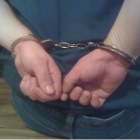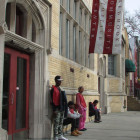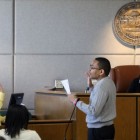
Diversion, Positive Youth Development, Restorative Practices: Connecting the Dots
|
“Effective, evidence-based practices that support the wellness and resiliency of youth in school and in the community are emerging.” —Models for Change (2010)
Juvenile Justice Information Exchange (https://jjie.org/tag/youth-court/)

“Effective, evidence-based practices that support the wellness and resiliency of youth in school and in the community are emerging.” —Models for Change (2010)

On Oct. 1, the first phase of a New York state law known as “Raise the Age” took effect, meaning 16-year-olds can no longer be arrested or tried as adults. A year from now, the law will extend to 17-year-olds as well.

For young residents of Red Hook, N.Y. the chance to keep their record clean, or clear it, can make a world of difference in their future.

The U.S. Department of Justice says a school-to-prison pipeline that runs through schools, the city police department and juvenile courts threatens children in Meridian, Miss. The school system is negotiating a new set of rules with the DOJ. The city, county, youth court and state of Mississippi, meanwhile, have just gotten hit with a federal lawsuit, and attention that may have already changed their ways. “We filed this lawsuit because we have to,” said U.S. Deputy Assistant Attorney General Roy Austin, in a public telephone conference on Oct. 25, the day after his department sued the City of Meridian, Lauderdale County, the county Youth Court judges and Mississippi’s Division of Youth Services claiming that the four agencies work together to ignore children’s due process rights and incarcerate them for minor infractions.

New York state 16- and 17-year-olds go to adult court, a practice nearly unique to the state. But that may change, as the New York legislature is expected to take another look at proposals to raise the age of criminal responsibility. “New York State is one of two states that automatically tries 16- and 17-year-olds as adults no matter what crime they commit … That’s what we’re trying to change,” said Angelo Pinto, the Raise the Age Campaign manager at the Correctional Association of New York, a progressive nonprofit. CA points to studies that say putting minors through some sort of youth-specific adjudication reduces the chances they will re-appear in court. By contrast, putting them in the adult system makes them more violent. But getting a new law is “not a slam dunk by any means,” said state Assemblyman Joseph Lentol (D-Brooklyn), sponsor of two age-of-responsibility bills this year.

This story was produced in partnership with the Center for Public Integrity
Lionel Townsend will turn 14 in September and a few months after that he will be able to return to school, ending a year of exile. Lionel admits he got into fights multiple times at Magnolia Middle School. When he was charged with vandalizing a school bus security camera, he was booted from school. He fought again in a community day program. The county Youth Court eventually put him on probation and an order to stay at home with an ankle monitor.

Greg Berman, director of the Center for Court Innovation in New York City gives an excellent overview of how youth courts work in this video interview with Leonard Witt of the JJIE.org. They are completely teen driven with teens as judges, attorneys and juries who hear actual cases either referred by the police or the courts. Each teen judge, attorney or juror gets 30-hours of training and has to pass a "bar exam" to be able to serve. In the youth courts Berman's center helps oversee, the kids running the courts come from a variety of backgrounds, so the offenders are being judged by their real peers. In fact, kids who once came before the court often come back later to serve as judges, attorneys and jurors, so Berman says it can be “a life changing experience.”
Kids sent to the court have already admitted guilt and are at the mercy of their peers to design the sanctions that will be administered.

Youth court, which provides an alternative for kids who are first time offenders, is being celebration nationally this month, according to the National Criminal Justice Reference Service. In most youth courts, offenders are facing a misdemeanor or status offense for crimes like theft or vandalism. Youth court provides them with a network of community and juvenile justice experts to respond to their problems.
If your organization has planned activities, we’d love to hear about them. Email me at kedwar35@students.kennesaaw.edu